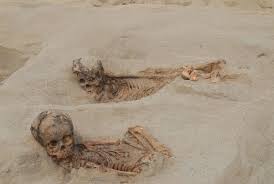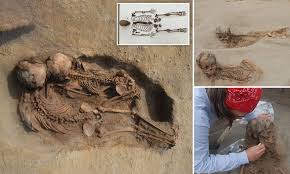A Gruesome Ritual Unearthed

In 2011, a father approached archaeologist Gabriel Prieto with a startling revelation: his children had been bringing home bones from a nearby dune. Little did Prieto know that this would lead to the discovery of one of the most shocking and tragic events in history – the largest mass child sacrifice ever recorded.
The Victims

As Prieto and his team excavated the site, known as Huanchaquito-Las Llamas, they uncovered the remains of at least 137 children, aged between 5 and 14, along with 200 young llamas. The haunting evidence suggested that their chests had been cut open, likely to remove their hearts in a ritual sacrifice.
A Devastating Natural Event

The Chimú culture, which dominated the Peruvian coast from the 11th to the 15th century, was highly dependent on agriculture and marine life. Researchers believe that a catastrophic El Niño event, bringing torrential rainfall and flooding, may have driven the Chimú leaders to carry out this unimaginable act, perhaps as a desperate attempt to appease the gods and restore balance.
A Heartbreaking Mystery

While the exact reason behind this mass sacrifice remains a mystery, the researchers have pieced together clues that offer a glimpse into the horror of that fateful day. The children, some from different regions and ethnic groups, were wrapped in cotton shrouds and buried in specific patterns, with offerings and markings suggesting a complex ritual.
A Somber Reminder
This chilling discovery serves as a somber reminder of the importance of preserving cultural heritage and archaeological sites. As John Verano, a co-researcher from Tulane University, stated, “We’ve saved a little chapter of prehistory.” It is a chapter that, while horrifying, offers invaluable insights into the beliefs and practices of an ancient civilization, forcing us to confront the depths of human sacrifice and the consequences of environmental catastrophes.

